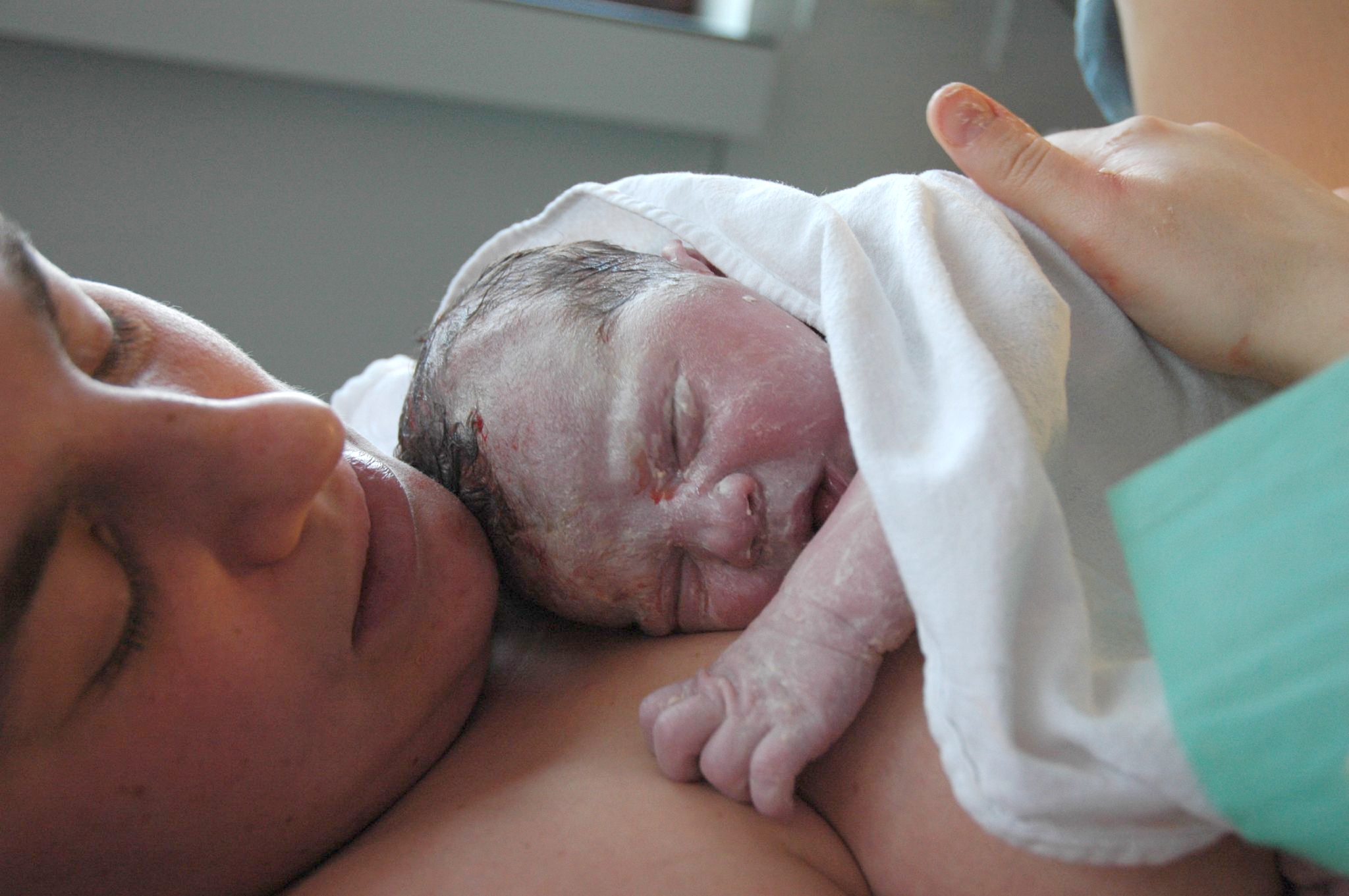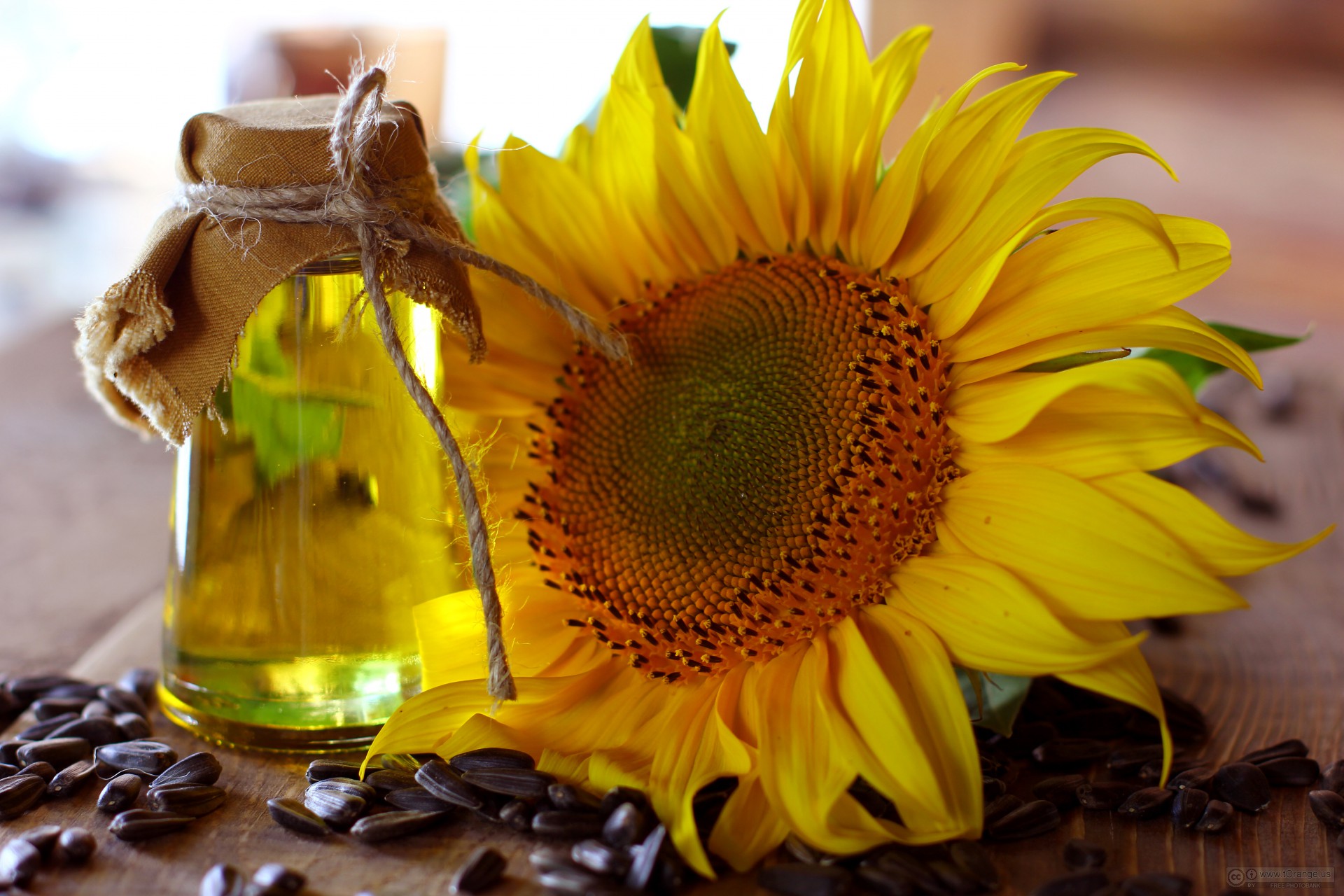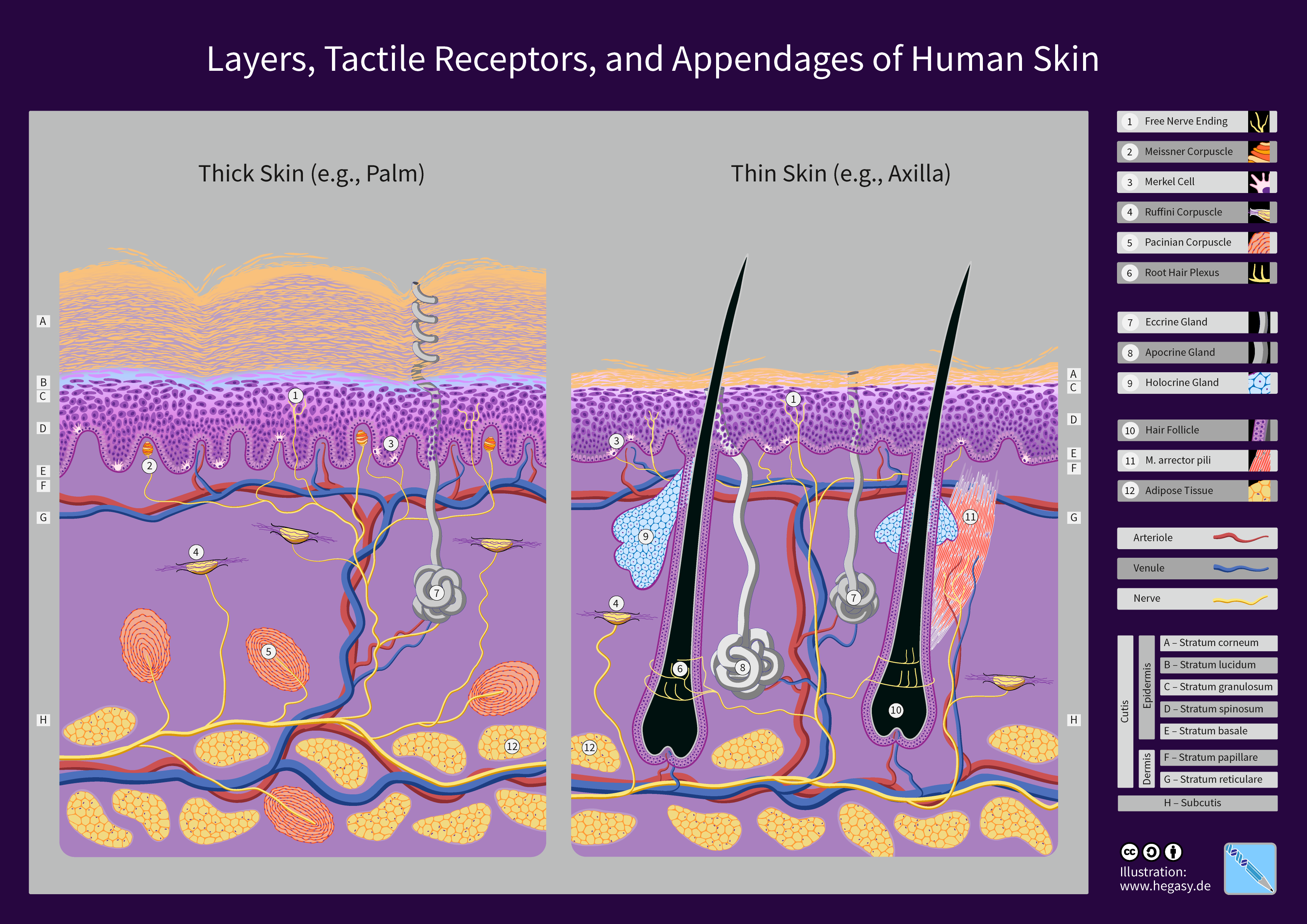|
Infant Massage
Infant massage is a type of complementary and alternative treatment that uses massage therapy for babies. Evidence is insufficient to support its use in either full term or preterm babies to achieve physical growth. History Ayurvedic medicine in ancient India taught the use of infant massage. It was also has been encouraged in China during the Qing dynasty. At present it is part of traditional childcare in South Asia and elsewhere where daily massage by mothers is seen as "instilling fearlessness, hardening bone structure, enhancing movement and limb coordination, and increasing weight". Other areas where infant massage is regularly used are African countries and areas in the former Soviet Union. In Western culture, infant massage has been increasingly used in neonatal intensive care units for pre-term infants who are in stressful environments and have limited tactile stimulation. Technique traditionnelle à l'africaine de bain de bébé au village Gogotinkpon au Bénin1.jpg Tech ... [...More Info...] [...Related Items...] OR: [Wikipedia] [Google] [Baidu] |
Mustard Oil
Mustard oil can mean either the pressed oil used for cooking, or a pungent essential oil also known as volatile oil of mustard. The essential oil results from grinding mustard seed, mixing the grounds with water, and extracting the resulting volatile oil by distillation. It can also be produced by dry distillation of the seed. Pressed mustard oil is used as cooking oil in some cultures, but sale is restricted in some countries due to high levels of erucic acid. Varieties of mustard seed also exist that are low in erucic acid. Pressed oil Oil makes up about 30% of mustard seeds. It can be produced from black mustard (''Brassica nigra''), brown mustard ('' B. juncea''), and white mustard ('' B. alba''). Having a distinctive pungent taste, the oil is used for cooking in India, Pakistan, Nepal and Bangladesh. Its pungent flavor is due to allyl isothiocyanate, a phytochemical of plants in the mustard family, Brassicaceae (for example, cabbage, horseradish or wasabi). Mustard oil ... [...More Info...] [...Related Items...] OR: [Wikipedia] [Google] [Baidu] |
Babycare
Child care, otherwise known as day care, is the care and supervision of a child or multiple children at a time, whose ages range from two weeks of age to 18 years. Although most parents spend a significant amount of time caring for their child(ren), child care typically refers to the care provided by caregivers that are not the child's parents. Child care is a broad topic that covers a wide spectrum of professionals, institutions, contexts, activities, and social and cultural conventions. Early child care is an equally important and often overlooked component of child's developments. Care can be provided to children by a variety of individuals and groups. Care facilitated by similar-aged children covers a variety of developmental and psychological effects in both caregivers and charge. This is due to their mental development being in a particular case of not being able to progress as it should be at their age. This care giving role may also be taken on by the child's extended f ... [...More Info...] [...Related Items...] OR: [Wikipedia] [Google] [Baidu] |
Swaddling
Swaddling is an age-old practice of wrapping infants in blankets or similar cloths so that movement of the limbs is tightly restricted. Swaddling bands were often used to further restrict the infant. Swaddling fell out of favour in the 17th century. A few authors are said to be of the opinion that swaddling is becoming popular again, although medical and psychological opinion on the effects of swaddling is largely against. Some modern medical studies indicate that swaddling helps babies fall asleep and to remain asleep and helps to keep the baby in a supine position, which lowers the risk of sudden infant death syndrome (SIDS). However, another study indicated that swaddling increased the risk of SIDS. Additionally, emerging evidence is showing that certain swaddling techniques may increase the risk of developmental dysplasia of the hip. Origin and history Several authors presume that swaddling was invented in the paleolithic period. The earliest depictions of swaddled babies ... [...More Info...] [...Related Items...] OR: [Wikipedia] [Google] [Baidu] |
Pediatric Massage
Pediatric massage is the complementary and alternative treatment that uses massage therapy, or "the manual manipulation of soft tissue intended to promote health and well-being" for children and adolescents. Its goal is to reduce pain, anxiety, loneliness and fear when children are hospitalized or diagnosed with a debilitating medical condition. Pediatric massage therapy takes into consideration each child's individual physical development, cognitive development and health care needs. Special Precautions Massage therapists practice hands-on therapeutic techniques to address a variety of medical and non-medical concerns for patients. As with all massage specialties, advanced training matters. Special precautions should be taken due to the patient’s vulnerability, both physically and emotionally, and to minimize risk and discomfort to the patient. Children may have apprehension relating to touch due to their medical treatments. Evidence Infant massage Infant massage is a type ... [...More Info...] [...Related Items...] OR: [Wikipedia] [Google] [Baidu] |
Kangaroo Care
Kangaroo care also called skin-to-skin contact (SSC), is a technique of newborn care where babies are kept chest-to-chest and skin-to-skin with a parent, typically their mother (occasionally their father). Kangaroo care, named for the similarity to how certain marsupials carry their young, was initially developed in the 1970s to care for preterm infants in countries where incubators were either unavailable or unreliable. More recently, the term skin-to-skin care is also used to describe the technique of placing full-term newborns immediately after birth on the bare chest of their mother or father. There is evidence that it is effective in reducing infant mortality, the risk of hospital-acquired infection, increasing weight gain, increasing rates of breastfeeding, and other advantages for both mother and baby. Medical uses Originally babies who were eligible for kangaroo care included pre-term infants weighing less than , and breathing independently. Cardiopulmonary monitoring, ... [...More Info...] [...Related Items...] OR: [Wikipedia] [Google] [Baidu] |
Haptic Communication
Haptic communication is a branch of nonverbal communication that refers to the ways in which people and animals communicate and interact via the sense of touch. Touch is the most sophisticated and intimate of the five senses. Touch or haptics, from the ancient Greek word '' haptikos'' is extremely important for communication; it is vital for survival. Touch is the first sense to develop in the fetus. The development of an infant's haptic senses and how it relates to the development of the other senses such as vision has been the target of much research. Human babies have been observed to have enormous difficulty surviving if they do not possess a sense of touch, even if they retain sight and hearing. Infants who can perceive through touch, even without sight and hearing, tend to fare much better. Similarly to infants, in chimpanzees the sense of touch is highly developed. As newborns they see and hear poorly but cling strongly to their mothers. Harry Harlow conducted a con ... [...More Info...] [...Related Items...] OR: [Wikipedia] [Google] [Baidu] |
Babywearing
Babywearing is the practice of wearing or carrying a baby in a sling or in another form of carrier. Babywearing has been practiced for centuries around the world. Babywearing is a form of baby transport which can be used for as long as mutually desired, often until toddlerhood and beyond.Blois, M, MD. (2005). ''Babywearing: The Benefits and Beauty of This Ancient Tradition''. Pharmasoft Publishing. In the industrialized world, babywearing has gained popularity in recent decades. Part of the reason for this shift is due to the influence of advocates of attachment parenting. History An early example of skin-to-skin infant care is the traditional Inuit woman's garment, the ''amauti'', had a large pouch at the back where the baby would sit against the mother's bare back. The Dayak people of Borneo traditionally employed a wooden baby carrier called a bening. Benefits Dr. William Sears, a pediatrician, coined the phrase ''attachment parenting''. One of Sear's principles of a ... [...More Info...] [...Related Items...] OR: [Wikipedia] [Google] [Baidu] |
Sunflower Seed Oil
Sunflower oil is the non-volatile oil pressed from the seeds of the sunflower (''Helianthus annuus''). Sunflower oil is commonly used in food as a frying oil, and in cosmetic formulations as an emollient. Sunflower oil is primarily composed of linoleic acid, a polyunsaturated fat, and oleic acid, a monounsaturated fat. Through selective breeding and manufacturing processes, oils of differing proportions of the fatty acids are produced. The expressed oil has a neutral taste profile. The oil contains a large amount of vitamin E. As of 2017, genome analysis and development of hybrid sunflowers to increase oil production are under development to meet greater consumer demand for sunflower oil and its commercial varieties. In 2018, Ukraine and Russia together accounted for 53% of the world's production of sunflower oil. Composition Sunflower oil is mainly a triglyceride. The British Pharmacopoeia lists the following profile: *Palmitic acid (saturated): 5% *Stearic acid (saturat ... [...More Info...] [...Related Items...] OR: [Wikipedia] [Google] [Baidu] |
Linoleate
Linoleic acid (LA) is an organic compound with the formula COOH(CH2)7CH=CHCH2CH=CH(CH2)4CH3. Both alkene groups are ''cis''. It is a fatty acid sometimes denoted 18:2 (n-6) or 18:2 ''cis''-9,12. A linoleate is a salt or ester of this acid. Linoleic acid is a polyunsaturated omega-6 fatty acid. It is a colorless liquid that is virtually insoluble in water but soluble in many organic solvents. It typically occurs in nature as a triglyceride (ester of glycerin) rather than as a free fatty acid. It is one of two essential fatty acids for humans, who must obtain it through their diet, and the most essential, because the body uses it as a base to make the others. The word "linoleic" derives from the Latin ''linum'' "flax" + ''oleum'' "oil", reflecting the fact that it was first isolated from linseed oil. History In 1844, F. Sacc, working at the laboratory of Justus von Liebig, isolated linoleic acid from linseed oil. In 1886, K. Peters determined the existence of two double bonds ... [...More Info...] [...Related Items...] OR: [Wikipedia] [Google] [Baidu] |
Human Skin
The human skin is the outer covering of the body and is the largest organ of the integumentary system. The skin has up to seven layers of ectodermal tissue guarding muscles, bones, ligaments and internal organs. Human skin is similar to most of the other mammals' skin, and it is very similar to pig skin. Though nearly all human skin is covered with hair follicles, it can appear hairless. There are two general types of skin, hairy and glabrous skin (hairless). The adjective ''cutaneous'' literally means "of the skin" (from Latin ''cutis'', skin). Because it interfaces with the environment, skin plays an important immunity role in protecting the body against pathogens and excessive water loss. Its other functions are insulation, temperature regulation, sensation, synthesis of vitamin D, and the protection of vitamin B folates. Severely damaged skin will try to heal by forming scar tissue. This is often discoloured and depigmented. In humans, skin pigmentation (af ... [...More Info...] [...Related Items...] OR: [Wikipedia] [Google] [Baidu] |
Olive Oil
Olive oil is a liquid fat obtained from olives (the fruit of ''Olea europaea''; family Oleaceae), a traditional tree crop of the Mediterranean Basin, produced by pressing whole olives and extracting the oil. It is commonly used in cooking: for frying foods or as a salad dressing. It can be found in some cosmetics, pharmaceuticals, soaps, and fuels for traditional oil lamps. It also has additional uses in some religions. The olive is one of three core food plants in Mediterranean cuisine; the other two are wheat and grapes. Olive trees have been grown around the Mediterranean since the 8th millennium BC. In 2019–2020, world production of olive oil was . Spain was the largest producer followed by Italy, Tunisia, Greece, Turkey and Morocco. San Marino has by far the largest per capita consumption of olive oil worldwide. The composition of olive oil varies with the cultivar, altitude, time of harvest, and extraction process. It consists mainly of oleic acid (up to 83 ... [...More Info...] [...Related Items...] OR: [Wikipedia] [Google] [Baidu] |








